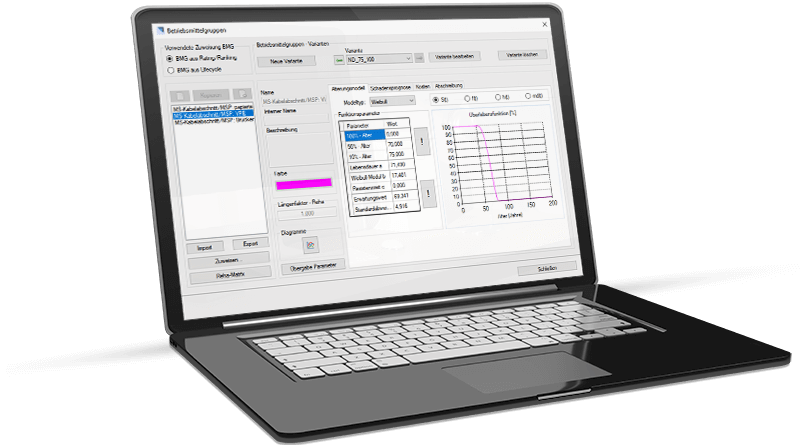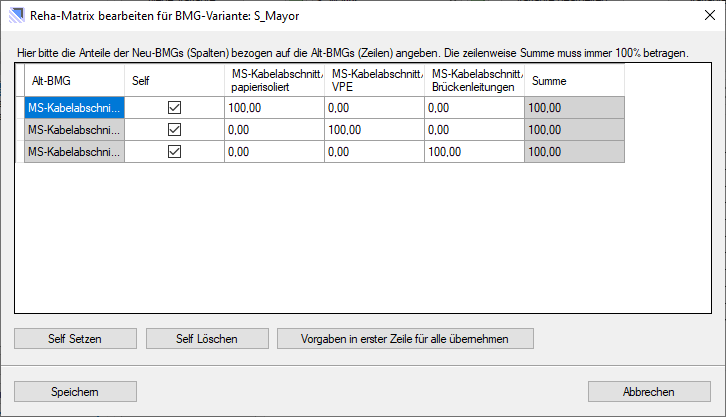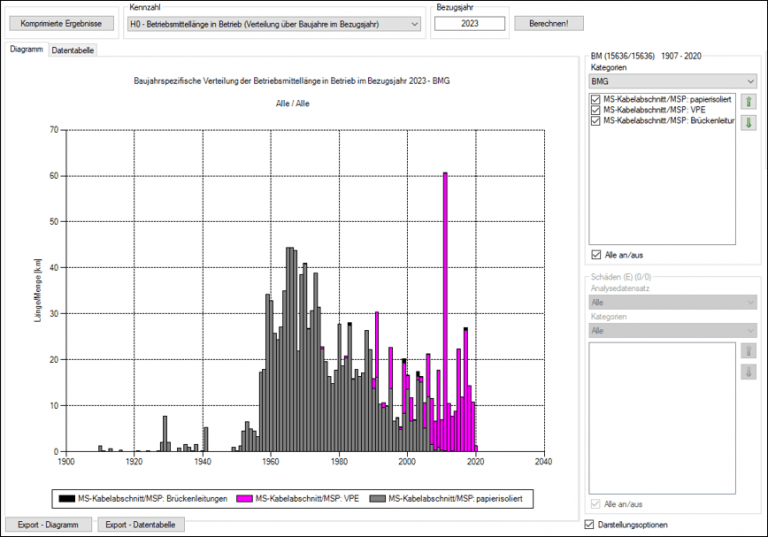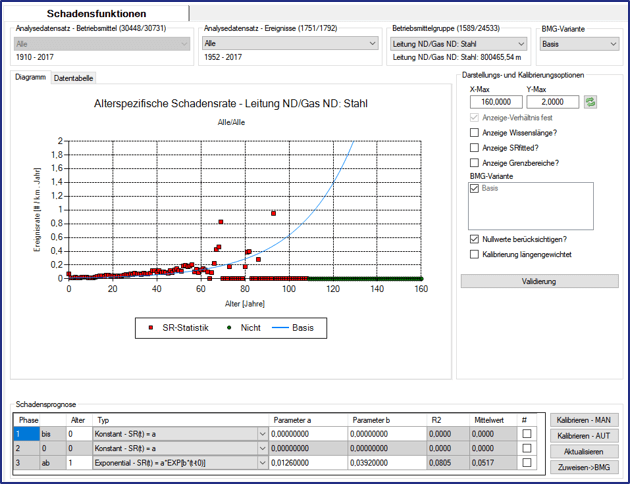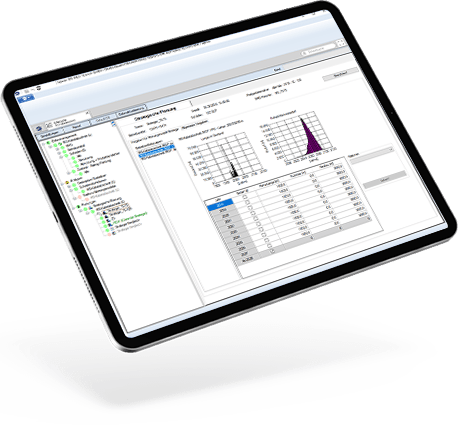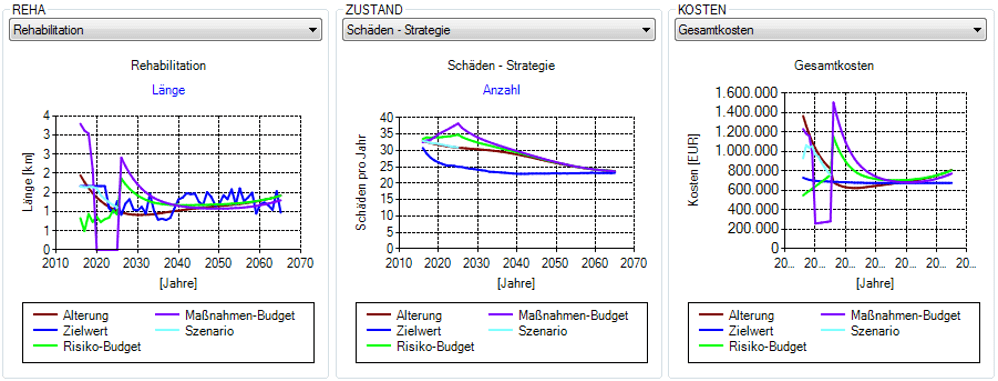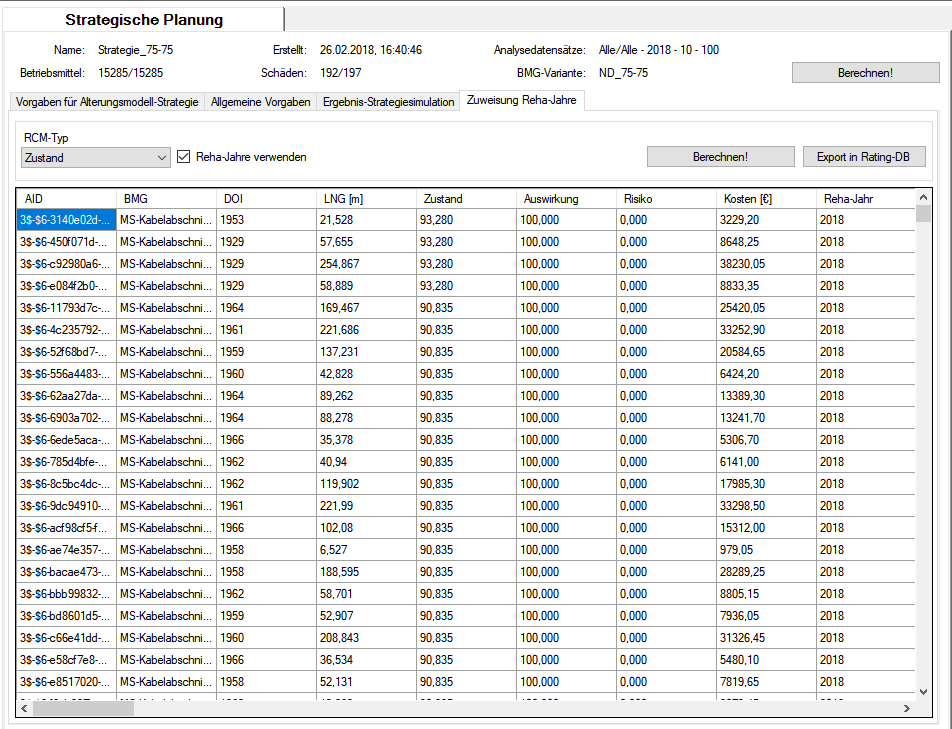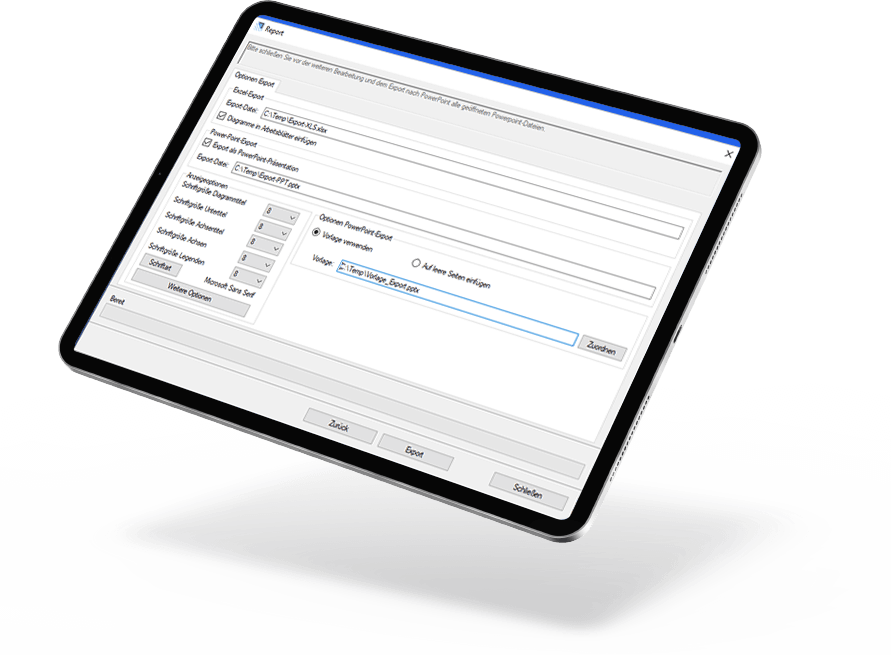Data Management
In Lovion LIFECYCLE, data from different sources is combined to calculate long-term simulations transparently and comprehensively. This includes technical asset information as well as business data such as costs and depreciation. Users have central access to specific technical information and business requirements for asset groups. Associated damage data and asset conditions provide an extensive overview with additional data sources relevant for forecasts.
Asset Groups
In Lovion Asset Management, assets are divided into common asset groups such as pipeline sections and transformers. A further differentiation is made by defining asset groups, such as line sections grouped according to their material, for example steel, PVC or PE and when they were manufactured. Asset groups defined in Lovion RATING are automatically transferred to Lovion LIFECYCLE. It is also possible to define new asset groups. This flexibility allows new specifications to be taken into account, for example, equipment that is not installed yet. This is helpful for possible replacement scenarios.

